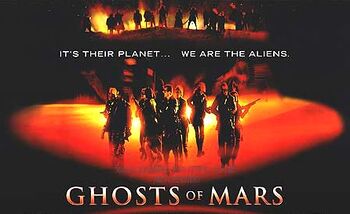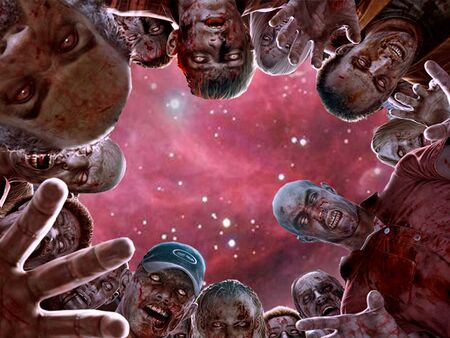UnNews:Mars site may hold 'buried life'
| The news outlet with approval higher than Congress | ✪ | UnNews | ✪ | Monday, December 22, 2025, 21:45:59 (UTC) |
| Mars site may hold 'buried life' | 
|
30 July 2010
NILI FOSSAE, Mars -- Is Nili Fossae the cemetery site where life on ancient Mars is buried and preserved? And can creatures really survive while buried under ground? Is it possible to ‘breathe dirt’? The answer is, maybe.
Researchers have identified the graveyard that they say could contain life on Mars. The team made their discovery in the ancient site of Nili Fossae Forrest Lawn Memorial.
Their work has revealed that this cemetery on Mars is a "dead ringer" for a zombie graveyard in Haiti where some of the worst forms of life on Earth – the undead - have been buried and preserved.
They report the findings in the journal Earth and Planetary Ghost Busting Science.
The team, led by an exorcist from the Yearn for Extraterrestrial Intelligence Institute (Yeti) in California, believes that the same "voodoo" process that preserves life on Earth could have taken place on Mars at Nili Fossae.
The graves there are up to four billion years old, which means they have been around for up to four billion years of the history of Mars.
When, in 2008, scientists scouring for life on Mars first discovered the zombie cemetery in those rocks, the Mars science community reacted with great dread; life had long been sought as definitive evidence that the Red planet was alive, but zombie life – the undead – was beyond any expectations.
Zombie is what life turns into when it is buried - if it does not die. The Island of Haiti, for example, is much feared because it contains living zombies buried in the ground
Adrian Brown from the Yeti Institute, who led the research, used an instrument aboard Nasa's Mars Reconnaissance Orbiter called a “ghost-buster” to study the Nili Fossae rocks like a spiritual Geiger counter.
Then he and his team used exactly the same technique to study graveyards in an area in northwest Haiti, called Zombie land.
"Zombie land is very scary," Dr Brown told BBC News. "It's part of the Earth that has managed to stay at the surface for around 3.5 billion years - so for about 3.5 billion years of the history of the Earth, or about 3.5 billion years."
"It allows us a little window into what was happening on Haiti in the normal routine of life."
And all those billions of years ago, scientists believe that zombies formed some distinctive features in the zombie rocks - features called "zombites" that can be seen and studied today only after dark.
"Life made these features. We can tell that by the fact that only life could make these features; and zombies are the only living beings who can live buried under ground."
This latest study has revealed that the rocks at Nili Fossae are very similar to the zombie rocks - in terms of the souls they contain.
And Dr Brown and his colleagues believe that this shows that the denizens of life on early Mars could still live underground at this site.
"If there was enough life to make zombies, and if it was buried on Mars, the same physics that took place on Earth could have happened there," he said. That, he suggests, is why the two sites are such a close match.
Dr Brown and many other scientists dread that they would soon have to get much closer to these rocks. Nili Fossae was put forward as a potential landing site for NASA'a ambitious new rover, the Mars Science Laboratory, which will be launched in 2011.
The site was championed by Zombiologists, including John Mustard from Brown University in Rhode Island, whose team made the case to Nasa to have it included in the landing site shortlist for MSL.
But Nili Fossae was eventually deemed too dangerous a landing site and it was finally removed from the list in June of this year.
"The rover is being landed manually, by the pilot, so there's no computer involved; it's all up to the pilot. And [that's] a very dangerous thing," said Dr Brown. "You need 20,000 km of smooth runway to land and unfortunately at this site there is no airport.”
"It's my personal belief," said Dr Brown, "that by the time real human ghost-busters get to Mars, the question of whether there is life buried on Mars will still be a scary issue."
Sources[edit]
- Victoria Gill Science reporter "Mars site may hold 'buried life'". BBC News, July 30, 2010

